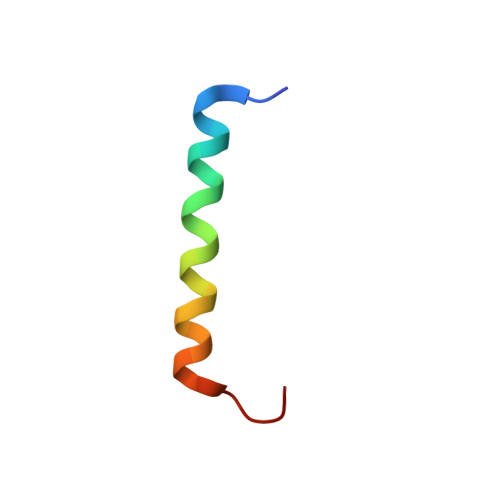Structural Basis and Functional Role of Intramembrane Trimerization of the Fas/CD95 Death Receptor.
Fu, Q., Fu, T.M., Cruz, A.C., Sengupta, P., Thomas, S.K., Wang, S., Siegel, R.M., Wu, H., Chou, J.J.(2016) Mol Cell 61: 602-613
- PubMed: 26853147
- DOI: https://doi.org/10.1016/j.molcel.2016.01.009
- Primary Citation of Related Structures:
2NA6, 2NA7 - PubMed Abstract:
Fas (CD95, Apo-1, or TNFRSF6) is a prototypical apoptosis-inducing death receptor in the tumor necrosis factor receptor (TNFR) superfamily. While the extracellular domains of TNFRs form trimeric complexes with their ligands and the intracellular domains engage in higher-order oligomerization, the role of the transmembrane (TM) domains is unknown. We determined the NMR structures of mouse and human Fas TM domains in bicelles that mimic lipid bilayers. Surprisingly, these domains use proline motifs to create optimal packing in homotrimer assembly distinct from classical trimeric coiled-coils in solution. Cancer-associated and structure-based mutations in Fas TM disrupt trimerization in vitro and reduce apoptosis induction in vivo, indicating the essential role of intramembrane trimerization in receptor activity. Our data suggest that the structures represent the signaling-active conformation of Fas TM, which appears to be different from the pre-ligand conformation. Analysis of other TNFR sequences suggests proline-containing sequences as common motifs for receptor TM trimerization.
- Department of Biological Chemistry and Molecular Pharmacology, Harvard Medical School, Boston, MA 02115, USA.
Organizational Affiliation:
















